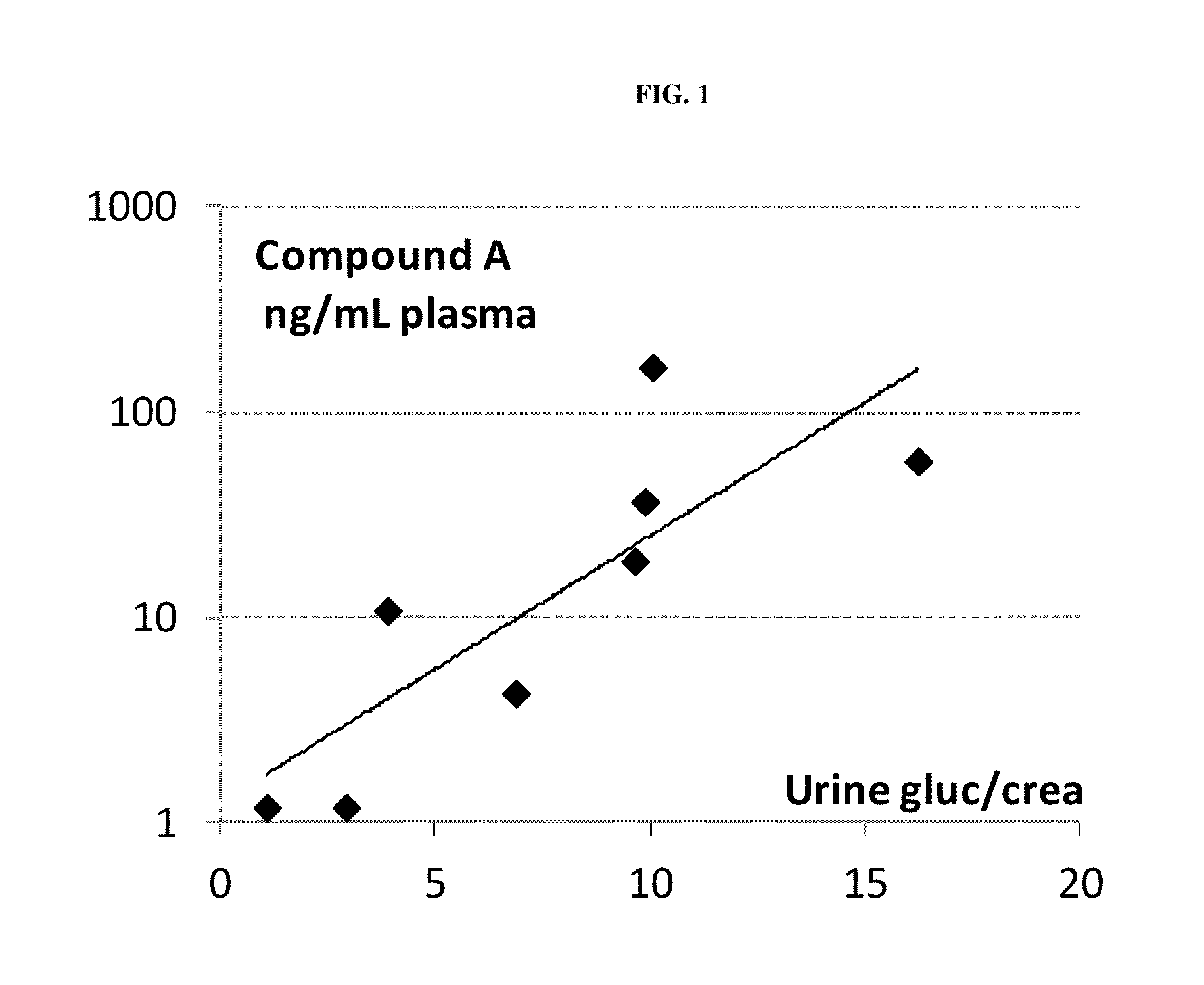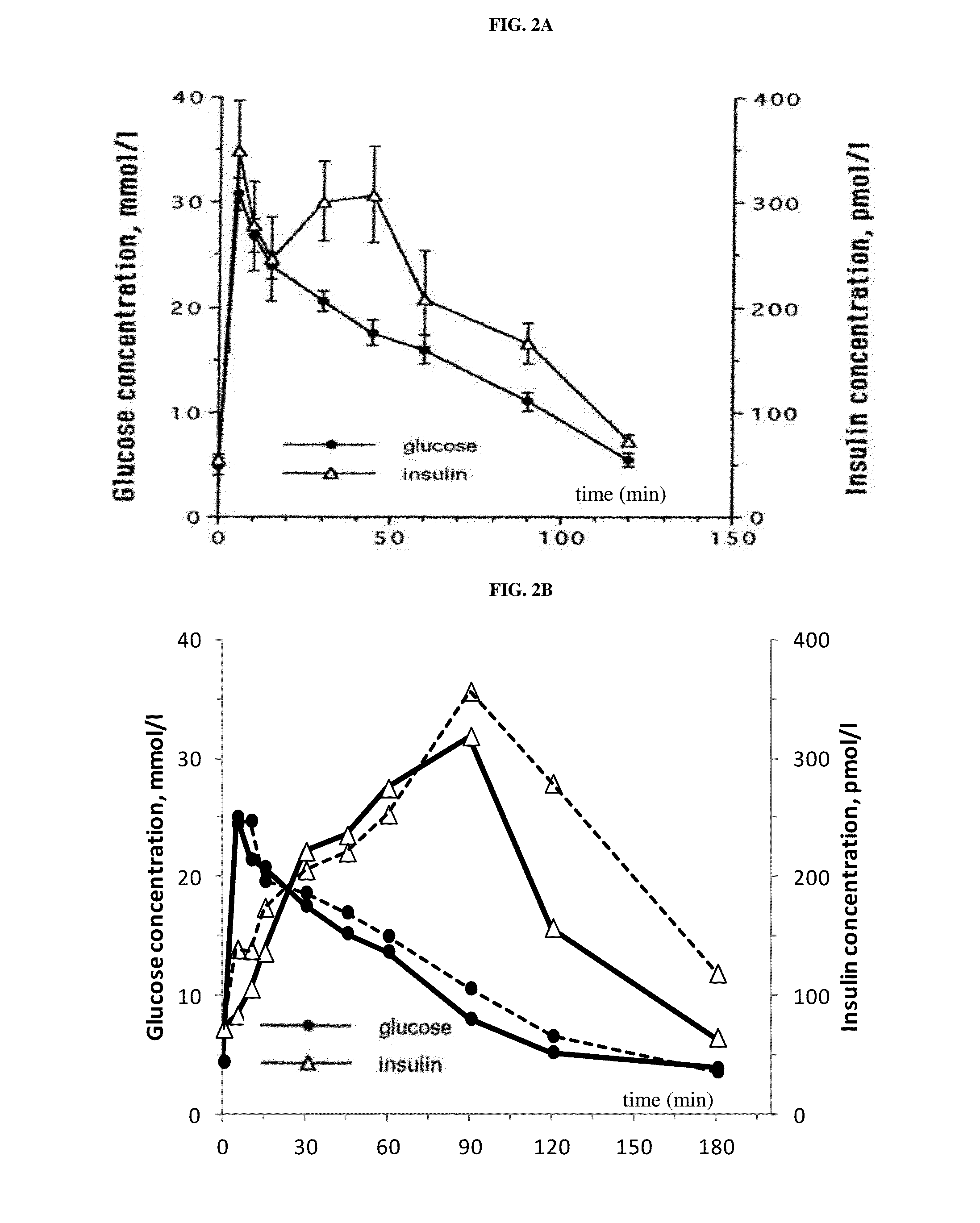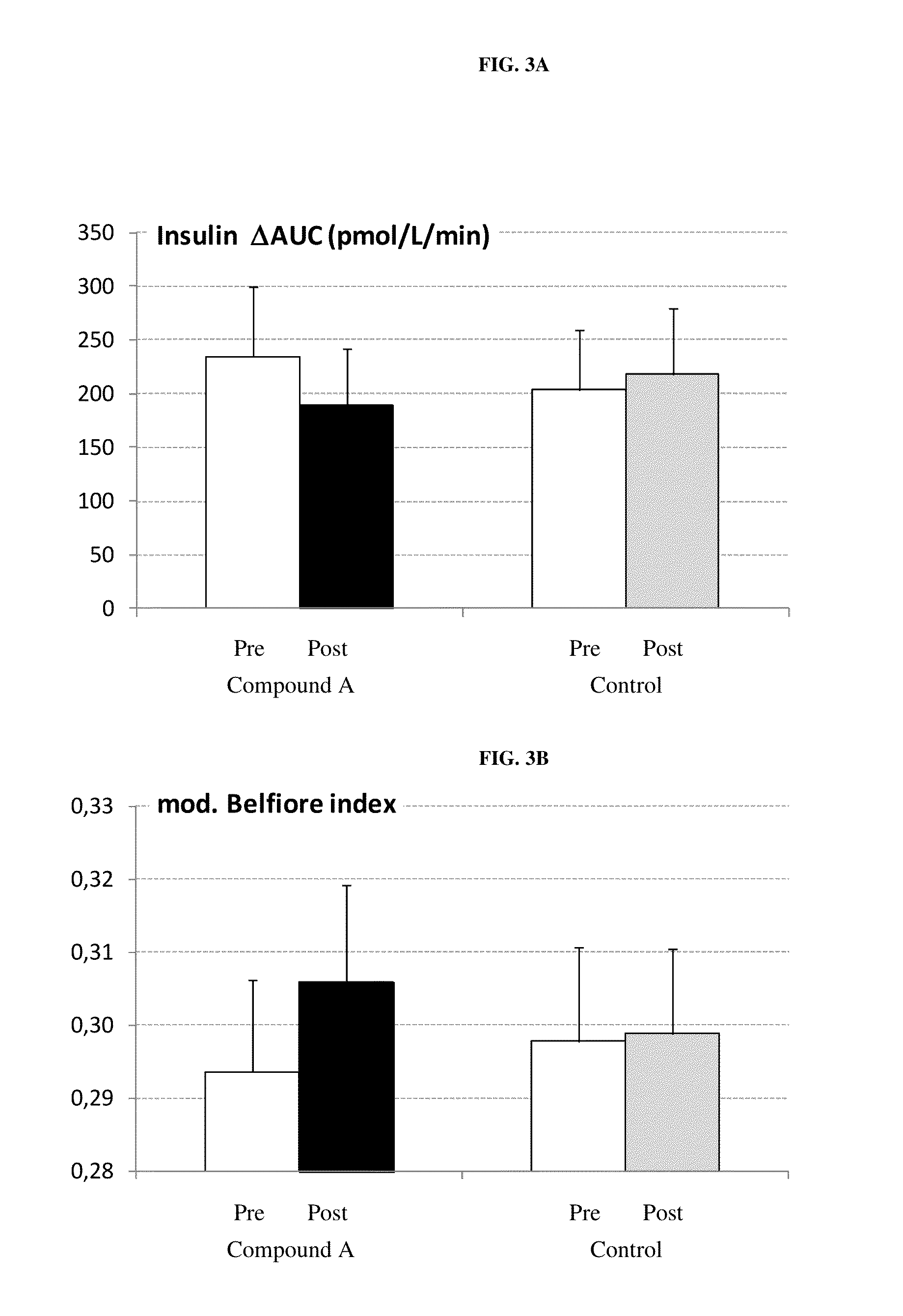Treatment of metabolic disorders in feline animals
a metabolic disorder and feline animal technology, applied in the field of veterinary medicine, can solve the problems of obesity and diabetes mellitus type 2 predisposition, diabetes mellitus type 2 is a growing problem, and it is not possible to conclud
- Summary
- Abstract
- Description
- Claims
- Application Information
AI Technical Summary
Benefits of technology
Problems solved by technology
Method used
Image
Examples
example 1
Pharmacokinetics (PK) / Pharmacodynamics (PD) of Compound a Single Oral Dosing in Cats
[0245]Compound A was administered to overnight fasted cats. The groups (n=3 per group) received a single oral administration of either vehicle alone (water) or vehicle containing the SGLT2 inhibitor Compound A at a dose of 0.01 mg / kg, 0.1 mg / kg and 1 mg / kg. PK / PD measurements were taken until day 4 after a single administration of compound A or its vehicle.
TABLE 2Pharmacokinetic data, single dose (0.01 / 0.1 / 1.0 mg / kg)Parameter0.01 mg / kg0.1 mg / kg1.0 mg / kgtmax [hour]mean11.31Cmax [nmol / L]mean9771173AUC0→∞ [nmol · h / l]mean303585379T1 / 2 [hour]mean1.22.95.4
[0246]Pharmacodynamic data:[0247]A prominent increase of urinary glucose concentration was evident at doses >0.01 mg / kg already 8 h after administration (mean group values: controls 1.4 mmol / L; 0.01 mg / kg-1.4 mmol / L; 0.1 mg / kg-46.1 mmol / L; 1 mg / kg-239.3 mmol / L) and was persistent for more than 24 h.[0248]None of the three doses of compound A altered the ...
example 2
The Effect of Compound a on Urinary and Blood Glucose after Repeated Dosing in Cats
[0251]Compound A was administered to overnight fasted cats. The groups (n=3 per group) received a once daily oral administration of either vehicle alone (PillPocket®) or vehicle containing the SGLT2 inhibitor (dry compound) at a dose of 1 mg / kg and 3 mg / kg for 3 consecutive days. Urinary glucose and blood glucose were measured.[0252]A prominent increase of urinary glucose concentration was evident at both doses already 8 h after administration. The maximal urinary concentration was not further elevated after repeated dosing and was similar at doses of 1 mg / kg and 3 mg / kg (mean values-281 mmol / L and 209 mmol / L, respectively).[0253]Neither dose of compound A altered the blood glucose level in cats as compared to normal reference values.
[0254]In respect to urinary glucose excretion it is thus estimated that the ED50 is <1 mg / kg.
example 3
The Effect of Compound a on Urinary and Blood Glucose after Repeated Dosing in Cats
[0255]Compound A was administered to freely fed normoglycemic, obese cats. The groups (n=6 per group) received a once daily oral administration of either vehicle alone (gelatin capsules) or vehicle containing the SGLT2 inhibitor (dry compound) at a dose of 1 mg / kg for 4 weeks. Urinary glucose and blood glucose were measured.[0256]Urinary glucose concentrations were significantly elevated at the end of the study—controls 0.6 mmol / L; 1 mg / kg-489 mmol / L.[0257]No alterations of blood glucose levels were observed.
PUM
| Property | Measurement | Unit |
|---|---|---|
| Mass | aaaaa | aaaaa |
| Dimensionless property | aaaaa | aaaaa |
| Dimensionless property | aaaaa | aaaaa |
Abstract
Description
Claims
Application Information
 Login to View More
Login to View More - R&D
- Intellectual Property
- Life Sciences
- Materials
- Tech Scout
- Unparalleled Data Quality
- Higher Quality Content
- 60% Fewer Hallucinations
Browse by: Latest US Patents, China's latest patents, Technical Efficacy Thesaurus, Application Domain, Technology Topic, Popular Technical Reports.
© 2025 PatSnap. All rights reserved.Legal|Privacy policy|Modern Slavery Act Transparency Statement|Sitemap|About US| Contact US: help@patsnap.com



